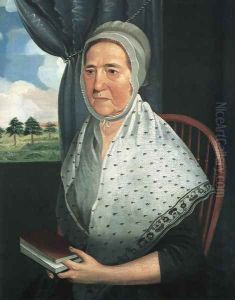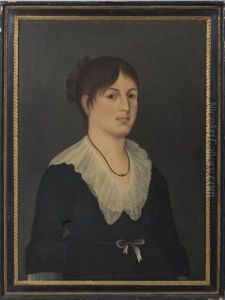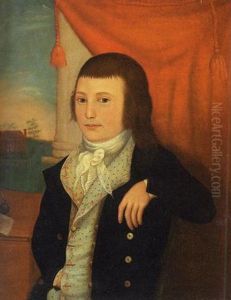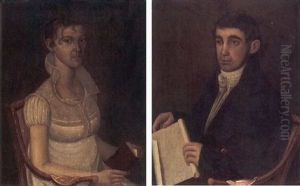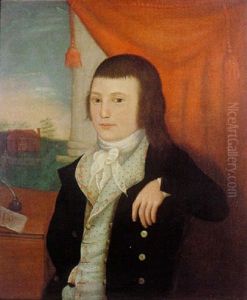Jacob Frymire Paintings
Jacob Frymire was an American itinerant portrait painter born in 1770, whose life and work provide a fascinating glimpse into the early American art scene. Not much is known about his early life, including his training as an artist, which remains a subject of speculation among art historians. However, what is clear is that Frymire's career as an artist was marked by his travels across the United States, capturing the likenesses of ordinary Americans during a time when the young nation was still forging its identity.
Frymire's itinerant lifestyle was typical of many artists of his era, who traveled from town to town seeking commissions from patrons who desired to have their portraits painted. This was a time before photography, and painted portraits were one of the few ways that individuals could immortalize themselves and their loved ones. Frymire's work is characterized by its straightforward, honest portrayal of his subjects, often capturing a certain rawness and realism that was uncommon among some of his contemporaries. His style reflects the transitional period of American art in the late 18th and early 19th centuries, straddling the line between the formal British influence and the emerging American aesthetic that emphasized simplicity and directness.
Despite his contributions to the American portrait painting tradition, Jacob Frymire's name is not as widely recognized as some of his peers. He died in 1822, leaving behind a modest but significant body of work that offers insight into the faces and personalities of early American life. His paintings are valuable not only for their artistic merit but also for their historical significance, serving as visual documents of a burgeoning nation's people. Today, Frymire's surviving works are studied by art historians and cherished by collectors, standing as testaments to the skill and perseverance of itinerant artists in early America.
